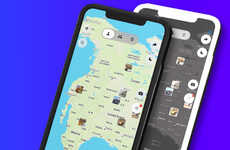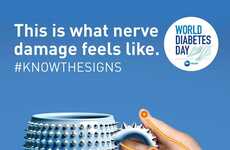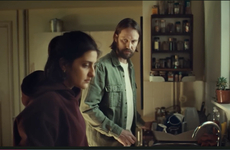
These Brain Map Ads Show How Lost Alzheimer's Patients Feel
Laura McQuarrie — September 11, 2015 — Marketing
References: institutoneurociencias.med.ec & coloribus
The experience of having Alzheimer's isn't easily understood, but with this pair of brain map diagrams that use familiar imagery, the Instituto de Neurociencias in Eduador shows what the disease looks like.
The print ads were designed in the style of Google Maps, setting up the many compartments of the human brain like twisting, winding and intersecting streets. In a corner of the design that's styled like a search bar, the ads communicate: "Alzheimer's turns you into a tourist," showing the unfamiliar journey a person with the disease has to make from a place like the kitchen to the bedroom.
In quite simple visual terms, these brain map ads are perfect at describing the experience of being lost inside the mind of an Alzheimer's patient.
The print ads were designed in the style of Google Maps, setting up the many compartments of the human brain like twisting, winding and intersecting streets. In a corner of the design that's styled like a search bar, the ads communicate: "Alzheimer's turns you into a tourist," showing the unfamiliar journey a person with the disease has to make from a place like the kitchen to the bedroom.
In quite simple visual terms, these brain map ads are perfect at describing the experience of being lost inside the mind of an Alzheimer's patient.
Trend Themes
1. Alzheimer's Awareness - Using visual representations, like brain map ads, to raise awareness about the experience of Alzheimer's disease and its impact on patients.
2. Creative Advertising - Exploring innovative ways, such as using familiar imagery and interactive designs, to communicate complex concepts and emotions through advertisements.
3. Human Brain Visualization - Developing new techniques and tools to visually represent the intricate and complex structure of the human brain, fostering better understanding and communication.
Industry Implications
1. Healthcare - Using brain map ads and other creative strategies to improve patient education, promote early detection, and support research and development in the field of Alzheimer's disease.
2. Advertising and Marketing - Employing innovative advertising approaches, like the use of visual metaphors and interactive designs, to engage audiences, evoke emotions, and create impactful brand messaging.
3. Neuroscience and Technology - Utilizing advancements in neuroscience and technology to develop new visualization methods, brain mapping technologies, and diagnostic tools for research, diagnosis, and treatment of Alzheimer's disease.
3.6
Score
Popularity
Activity
Freshness























